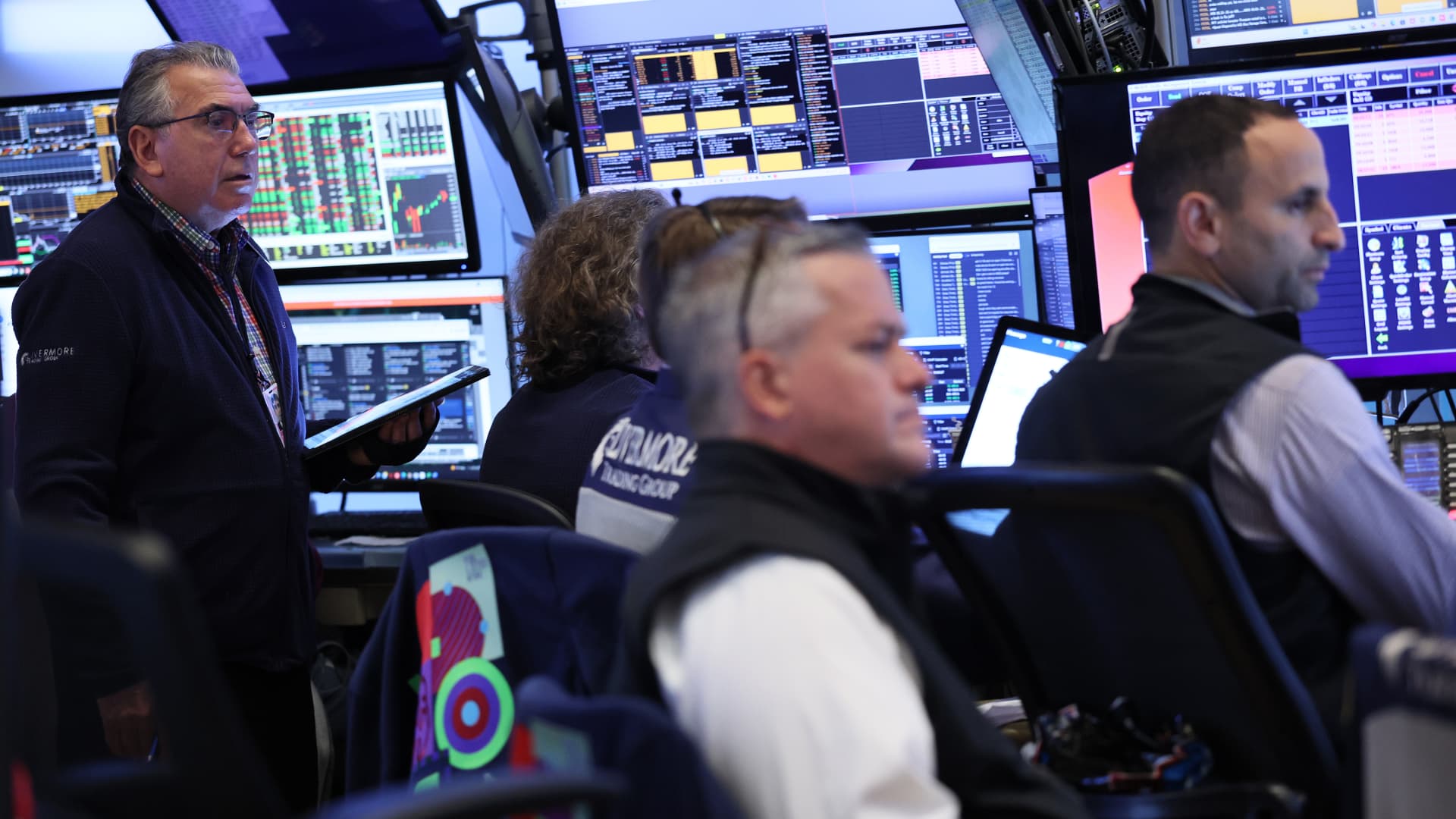(These are the market notes on today’s action by Mike Santoli, CNBC’s Senior Markets Commentator. See today’s video update from Mike above.) It says a lot about the gentleness of the market’s recent climb that today’s half-percent sag in the S & P 500 would essentially match the two worst days for the index since late August. At this point, the action is best described as a few days of hesitation since the index first hit the 6,700 level eight days ago. Still, because so much attention has fallen on the sustainability of the feverish AI-driven leadership and we’re now seeing a coincident pullback in the over-extended gold price, the bumpy action stands out. Market breadth is skewed lower by a 3:1 ratio with a distinct “sell the winners” tone. Of the 15 best-performing S & P 500 component stocks year to date, only two are up on the day, with several semi-related names, Robinhood , GE Vernova and Applovin in the red. One of these wobbles will eventually develop into the first 3%+ S & P 500 pullback since April, though there’s nothing in today’s action that’s particularly more worrisome than during Tuesday’s similar mild dip, which was quickly reversed on Wednesday. The market is still rotating and rebalancing enough to keep things quite orderly, for now. Nvidia is up another 1.8%, has broken out after a few weeks of sideways action, with one analyst setting a price target of $300 today — up more than 50% to what would be a $7.2 trillion market value. The wall of cash colliding with supply-constrained tech hardware has been hard to fight, even as it generates its own anxieties around overbuilding and naïve optimism. Without this lift, the S & P’s dip would be one-third deeper. Some of the nagging worry spots in the market continue to poke at the macro underpinnings of this phase of the rally. I’ve noted the pronounced softening in consumer cyclicals since last week and they remain under pressure. There was a chance that an upside surprise in Costco ‘s monthly comp-store sales and raised guidance by Delta Air Lines might have offered some relief here, but the equal-weighted consumer discretionary group is off another 1.1% — now down 3% this month and 6% below its high. Housing-related, travel and some chain retail (auto-parts) are heavy. There are three core premises of the present bullish thesis that are now looking more debatable. One, that the soft labor market data have sustainably decoupled from a still-sturdy GDP-growth trend. Two, that still-tight corporate bond spreads mean macro risk is low, but is that only because the real stress is in private credit? Three, that the market is fine with a government shutdown and lack of fresh economic data because the Fed is set for multiple further rate cuts. All of this remains plausible and might even be likely, but as time goes on and the market grows impatient for confirmation on these fronts, some value is leaking out of the cyclical/financial leadership, credit-sensitive stocks are struggling after the First Brands bankruptcy bumped against investment bank Jefferies and some Fed speakers are saying further cuts depend on data that we’re less likely to see released the longer the shutdown drags on. Has the frenzy in gold culminated for now? The price is down more than 2% two days after first surmounting $4,000 an ounce, attracting many non-commodity momentum buyers and registering several technical extremes. Here is the rolling 12-month total for gold ETF inflows, via Strategas Research, matching the 2020 peak, after which gold pulled back a bit then went nowhere for quit a while.
Stocks pull back from record highs as Wall Street takes a breather

